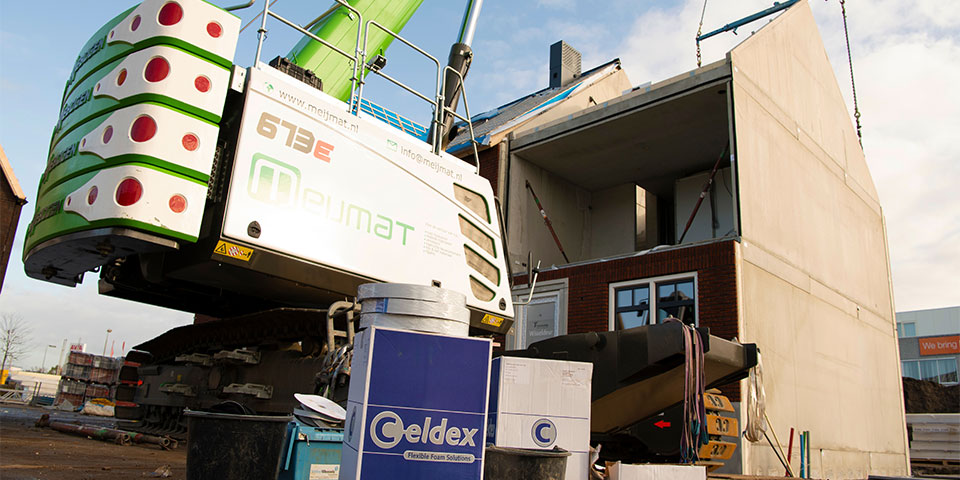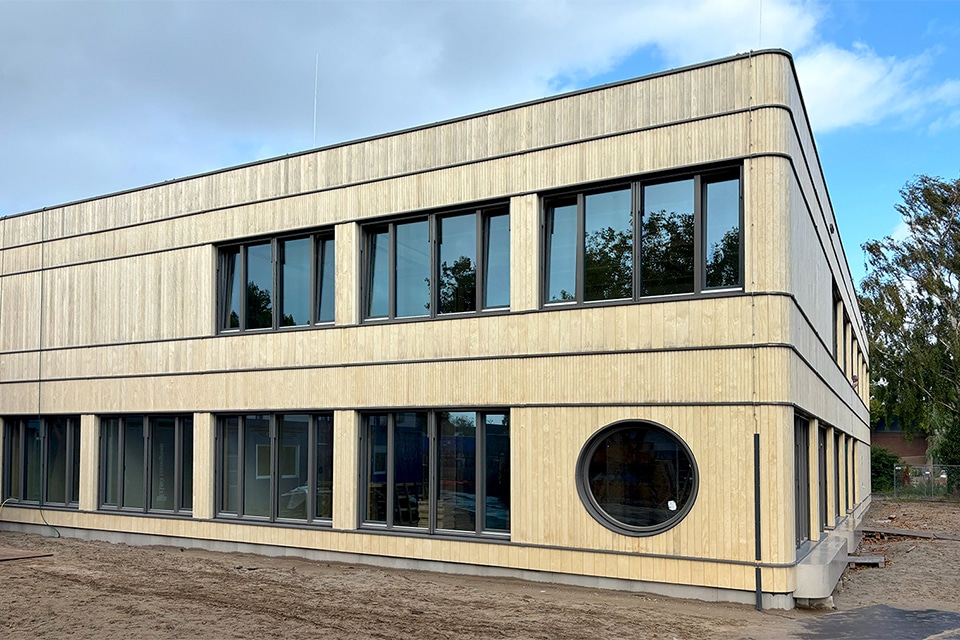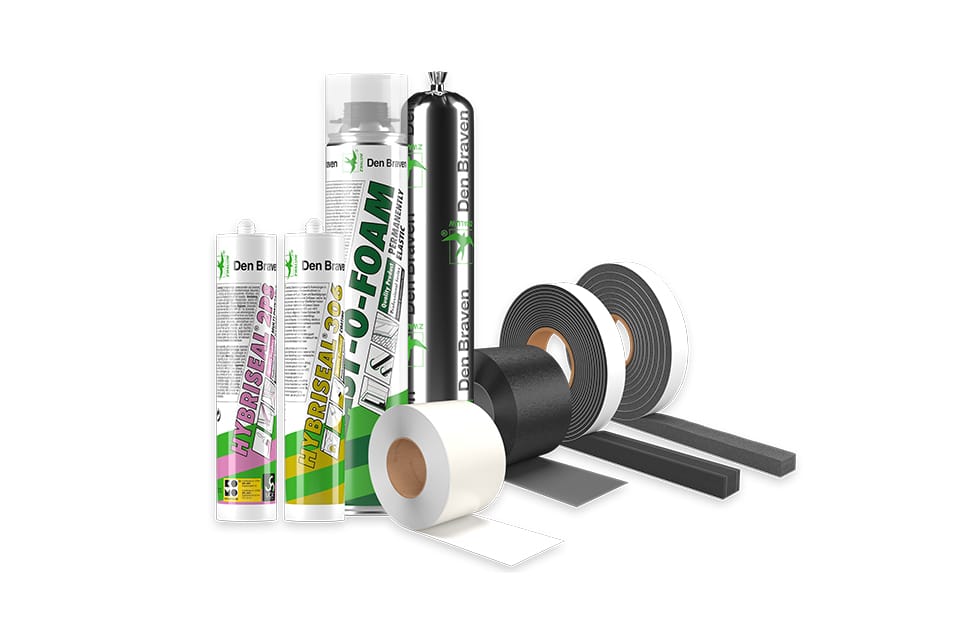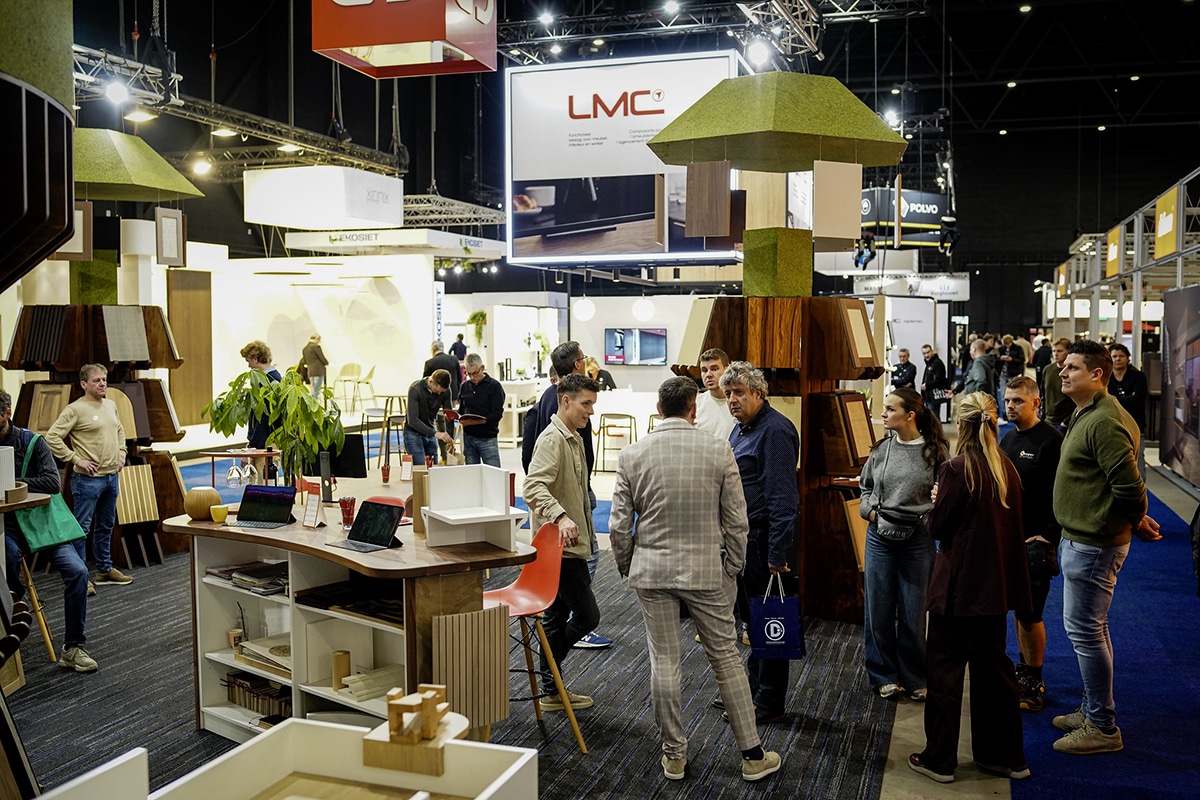
Optimal air sealing, even in prefabricated construction
To guarantee a comfortable indoor climate and keep our energy costs under control, it is important that indoor and outdoor climates are effectively separated. In addition to insulating the building envelope, good air sealing is crucial for this, says Henny van der Heijden, product manager at Celdex.
"I always compare it to a warm winter coat," he says. "As soon as it gets colder outside, we put on a coat to insulate our bodies. Moreover, when it gets really cold, we zip it up. Where insulation materials represent the coat of the home, our sealing products symbolize the zipper. You can't have one without the other. If you insulate a home but don't seal it properly, dew points develop in the insulation, resulting in moisture and mold. If you choose sec for an airtight building, an incredible amount of heat is lost to the outside."

With climate goals set for 2030 on the horizon, increasing attention is being paid to the importance of and opportunities for building insulation and air sealing. Not surprisingly, because with the right measures, energy losses can be significantly reduced. Low temperature installations are also becoming possible and, for example, air conditioning systems can be sized smaller. Despite the growing attention, Van der Heijden notices that there is still a lot of uncertainty in the market. For example, regarding the airtightness performance that buildings must at least meet.
"In most projects, Qv;10 and Building Code values are defined from which, in the case of ground-level housing, airtightness performance is derived," he says. "However, in apartment buildings, which combine dwellings, elevators, traffic areas and parking levels, it is not always clear whether the requirements relate to the individual dwellings or the entire building. Because these details have a major impact on the location of the airtight shell - and thus of the sealing products - Celdex advocates for more clarity in this area."
Prefabricated construction trend
Synchronous with the developments around energy-efficient and airtight construction is an increasing use of prefabrication, notes Van der Heijden. "A logical development, because it guarantees a consistently high construction quality. Production takes place in the factory, under the best (climatic) conditions. Also, production can already be started while the foundation is being poured on site. All this leads to significantly shorter construction times, thus lower costs. In addition, less skilled manual labor is required on site, failure costs are reduced and building in the factory is safer.
HSB, frame and concrete frame manufacturers are increasingly able to meet demand. Finally, in combination with good air sealing, (new) requirements such as BENG, Zero-in-the-Meter and BREEAM can be met. Last year, just under 9,000 of the nearly 71,000 new homes were industrially manufactured. That means that one in eight homes now 'comes from the factory,' regardless of the large amount of prefabricated building elements that are used."

New generation of 'dry' sealing products
The sealing of building elements is also increasingly moving from the construction site to the factory. This not only places new demands on assembly and work preparation, but also on sealing products, Van der Heijden said. "Celdex has seen the prefabricated construction trend coming for some time and has extensively surveyed the needs and challenges in this area. Among other things, this has led to our Dichtgarant concept, with which we provide stakeholders in construction with all the essential building blocks to achieve and demonstrate the desired performance in the field of airtight construction. Developments such as scaffoldless construction require different products. We have developed a new generation of 'dry' sealing products that can already be prefabricated in the factory. A big change for the contractor, who no longer needs to apply traditional 'wet' sealing products such as PU foam, sealant and coating for many details. "A good example of the new sealing products are the Celdex foam tapes, which can already be applied in the concrete or carpentry shop.
"A carefully selected selvedge ensures that the foam tapes remain in place even during transport and assembly, so that the tape also functions well in the application. Thanks to a low friction layer, the foam tape also cannot curl up when the elements rub past each other."
Knowledge transfer and knowledge assurance
Important components of Celdex Dichtgarant are knowledge transfer and knowledge assurance. "On the basis of building drawings, for example, we give advice on the most suitable sealing products and (prefab) assembly," Van der Heijden says. "What do you need to pay attention to? And what performance can processors and contractors expect? All processes are carefully recorded in partial reports, which together produce a single report for private quality assurance."




